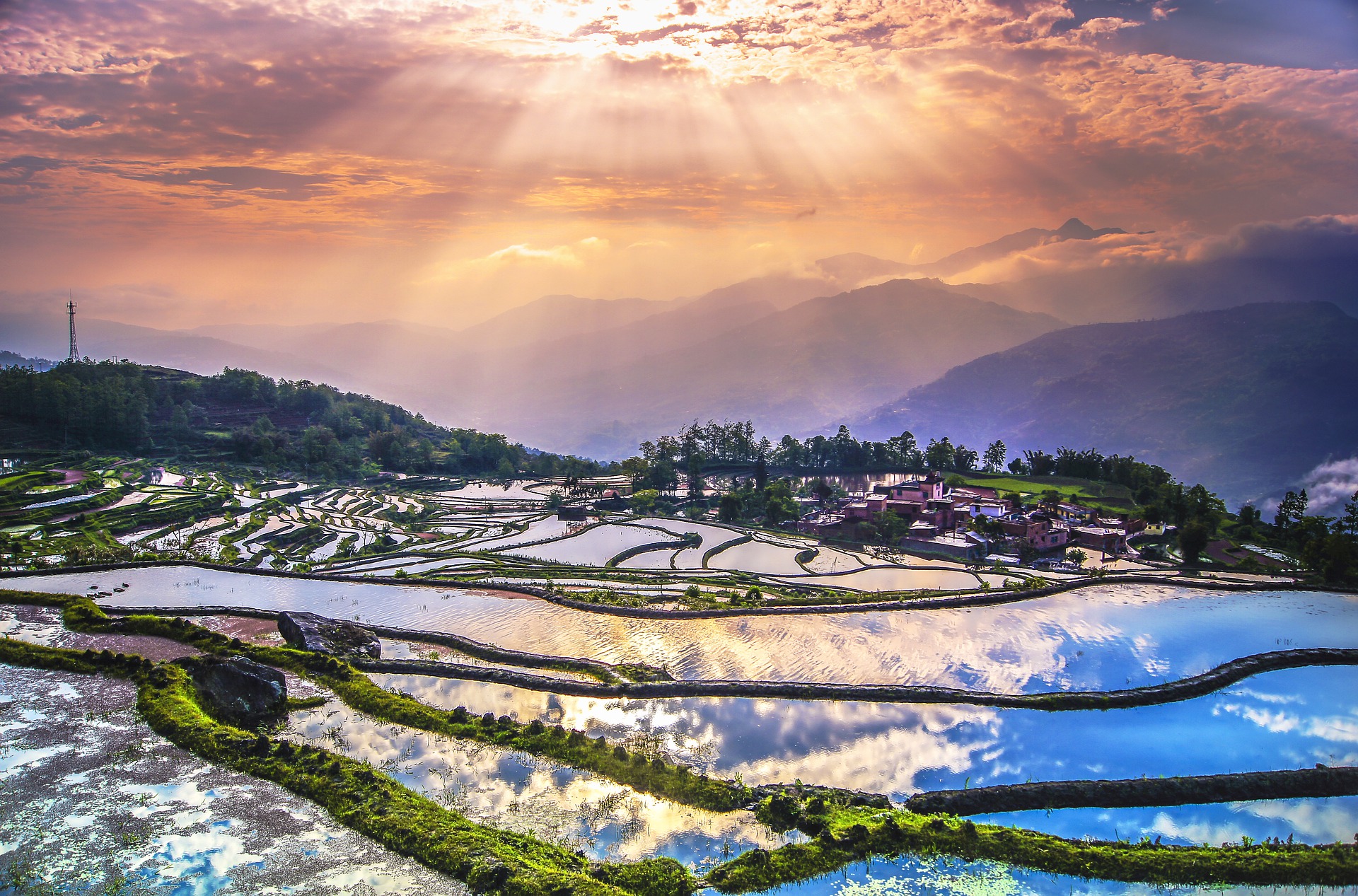
The Yuanyang Hani Rice Terraces in Honghe in Southern Yunnan present some of the most spectacular and astonishing landscapes to be found nowhere else in the world. They are a combination of great natural beauty, enhanced with human invention and artistry. The Yuanyang Hani Rice Terraces are amazing in a multitude of ways, but just to see them is to be nearly struck dumb with wonder, because the experience is beyond words to describe.
In the foothills of the Ailao Mountains Hani farmers over the last 1,300 years carved terraces into the sloping mountainsides to create a series of level surfaces they could build rice paddies on.
A giant network of terraces extends for a great distance across the slopes of the towering Ailao Mountains, creating one appears to be one gigantic work of art that used the landscape as its artistic materials. It could be the world’s largest painting, wildly colorful, intricate in design and spectacularly vast.
The terraces are marvels of irrigation and farming technologies that enabled farmers to produce food on land not naturally suited to their purposes. A massive and highly complex system of channels brings water from the mountaintops to the mountainsides, which have been restructured from slopes to a series of steps from one flat level area to the next, ideal for planting rice in standing water.
But in addition to their practical value in feeding the people, taken all together they constitute one of the greatest large-scale works of art to be found nowhere else.
The Yuanyang Rice Terraces are a UNESCO World Heritage Site.
Xinjie Town, Yuanyang County, Honghe Hani and Yi Autonomous Prefecture, Yunnan Province, China
The Hani terraced fields extend through many towns along the south bank of the Red River, including Yuanyang, Lvchun and Jinping.
The terraced region of Yuanyang County, an area of more than 28,000 acres, is a good central point in the region of Hani terraces. The Yuanyang Terraces can be viewed in three major scenic areas: the Duoyishu scenic area, the Bada scenic area and the Laohuzui (the Tiger Mouth) scenic area.
The slopes on the hillsides vary from about 15 degrees to about 75 degrees. The are as many as 3,000 steps from one terrace to the next.
The best time to visit is between November and April, when the terraces are full of water and the scenery is at its most spectacular.







